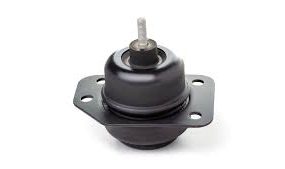
Transmission fluid plays the role of lubricating the car’s transmission for effective performance. Adding transmission fluid will require some specific moves and intentional actions such as doing it when your car is in its best condition and adding the right fluid.
However, the question is, do you leave the car running when adding transmission fluid or should your engine be turned off?
You can leave the car running when adding transmission fluid as long as the car is in Park and the handbrake activated for safety. Leaving the engine running will assist you in knowing the fluid level needed for an effective drive.
Do You Leave The Car Running When Adding Transmission Fluid?
Adding transmission fluid is paramount to doing the hard stuff. Yes, you may add transmission fluid while the engine is running. At optimal temperature, it is the best condition to add transmission fluid to the car.
At optimal temperature, the exact reading of the transmission fluid is clear; you can know if you will need to add more or less.
The significant importance of adding your transmission fluid while it is hot will prevent you from overfilling your transmission fluid. When your car is heated, the transmission fluid can expand at optimal heat.
Reasons to Leave the Car Running When Adding Transmission Fluid
Reasons why you should add transmission fluid while the car is running, are:
Fluid Expands when Heated
Every fluid is subject to expansion when some level of heat is added. Likewise, transmission oil also expands at optimal temperature, which enables you to know the exact fluid level while the car is still running.
Transmission Fluid Does Not Stay in the Bottom Pan
When your car is heated, the torque converted stays submerged, but if the car isn’t running while adding the transmission fluid, the added fluid stays in the bottom pan, which prevents you from getting the expected readings.
When changing and filling up the transmission fluid, an exact reading is required, an overfilling will cause more problems than expected to the car’s engine.
How To Know If My Car Needs Transmission Fluid?
There are various ways to know if your car is a shortage of transmission fluid. Here are a few of the needed signs you should know:
- A Burnt Smell From Your Car: When there is little or no transmission fluid in your car, a burning smell of different sorts will arise and when you notice your car is producing a burnt smell, get a transmission fluid and have someone leak out the residual and put in a new one.
- Gears Shifting is Difficult to Pull Through: Anytime you notice your gear isn’t shifting, it can be traced to having a low transmission fluid level, and it means you are required to add more fluid to ensure your gear works actively with no difficulties.
What if Your Engine is Not Running When Adding Transmission Fluid?
It isn’t wrong to add transmission fluid when the engine isn’t running, but doing this can damage the car and cost you more than you can ever imagine.
Heat is required to ensure the fluid expands and that you can know the exact fluid level to avoid overfilling.
Transmission boxes jam or act with little efficiency when your car experience overfilling. An issue of overfilling is always a problem when the transmission fluid is added when the car is not running.
Even if the engine is off while you add the fluid, after you must have added some liters of fluid, start the car and let the car warm up. You can even change the gears to drive, reverse, or neutral to allow the fluid to circulate.
However, you should never let the car move while doing this. Your foot should be on the brake while your hand brake is in use.
Can You Add Transmission Fluid Yourself?
Adding transmission fluid is easy, but a dirty job because it will require leaking out the previous fluid and adding a new one.
Adding a new transmission oil isn’t hard, and nor is it stressful, but leaking your transmission fluid will require getting your hands dirty because it will require lying underneath the car, having a pan, and leaking out the fluid gently until the reservoir is ready to take in new fluid.
If you want to save funds, you can choose to get yourself involved by draining and refilling your transmission oil, but if you can’t do the dirty job, you will need to pay a mechanic to do the refilling process.
How Do You Add Transmission Fluid?
The following processes are how to add transmission fluid to your car the right way:
1. Keep Your Engine Running with the Parking Brake Set
Adding transmission oil will require you to keep your car running. When you do this, ensure your car transmission is in Park with the handbrake activated as a safety measure.
2. Know the Exact Transmission Fluid for Your Vehicle
To know the exact transmission fluid to use, check your user manual to find out what fluid to use and the best way to apply it.
Also, note that a transmission dipstick is also a good way to assist you in determining what type of transmission fluid is needed for your vehicle.
You should know that there are varieties of choices of transmission fluid but be sure to find the most favorable for your engine’s transmission.
The manual transmission also contains an essential guideline for how frequently you need to leak out and change your transmission fluid.
It’s also recommended by many manufacturers to add your transmission fluid every 30,000 to 100,000 miles traveled but be warned that you should be on guard to know when it’s low and needs to be changed for proper car effectiveness.
3. Find a Transmission Fluid Funnel
Find a transmission fluid funnel that fits the dipstick hole of the transmission. Ensure you have the right one before proceeding to pour the correct transmission fluid.
4. Pour the Fluid Slowly into the Funnel
When adding fluid into the funnel, ensure it is done slowly in order not to cause an overflow. Before you proceed, be sure of:
- If you are topping up to fill up the lost one
- If you are doing a transmission service by leaking off into a pan
- Are you doing a total replacement of the transmission fluid?
If you have found out what reason for adding transmission fluid, then you will know how much quantity is needed to get the fixing done.
5. Have the Brake Depressed
When you keep the car running, it ensures the transmission fluid expands and circulates to ensure you are getting the exact reading to avoid overflowing. Add the transmission fluid slowly, a little at a time, until the exact level of transmission oil is gained.
6. Restore the Dipstick to its Normal Position
Turn it until it locks appropriately or has the latch pressed down onto the dipstick to lock it into its place.
Final Thoughts
Ensure your car is running when you add transmission oil to ensure you can get the expected reading. If what you need is to replace the transmission fluid totally, get a mechanic because it might get you stained and have your fingernails spilled with fluid residuals.









